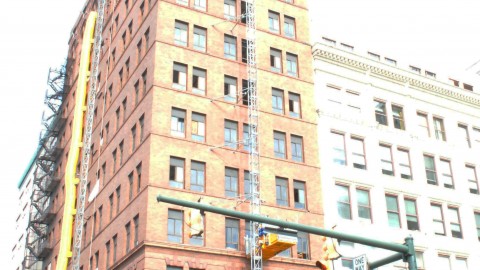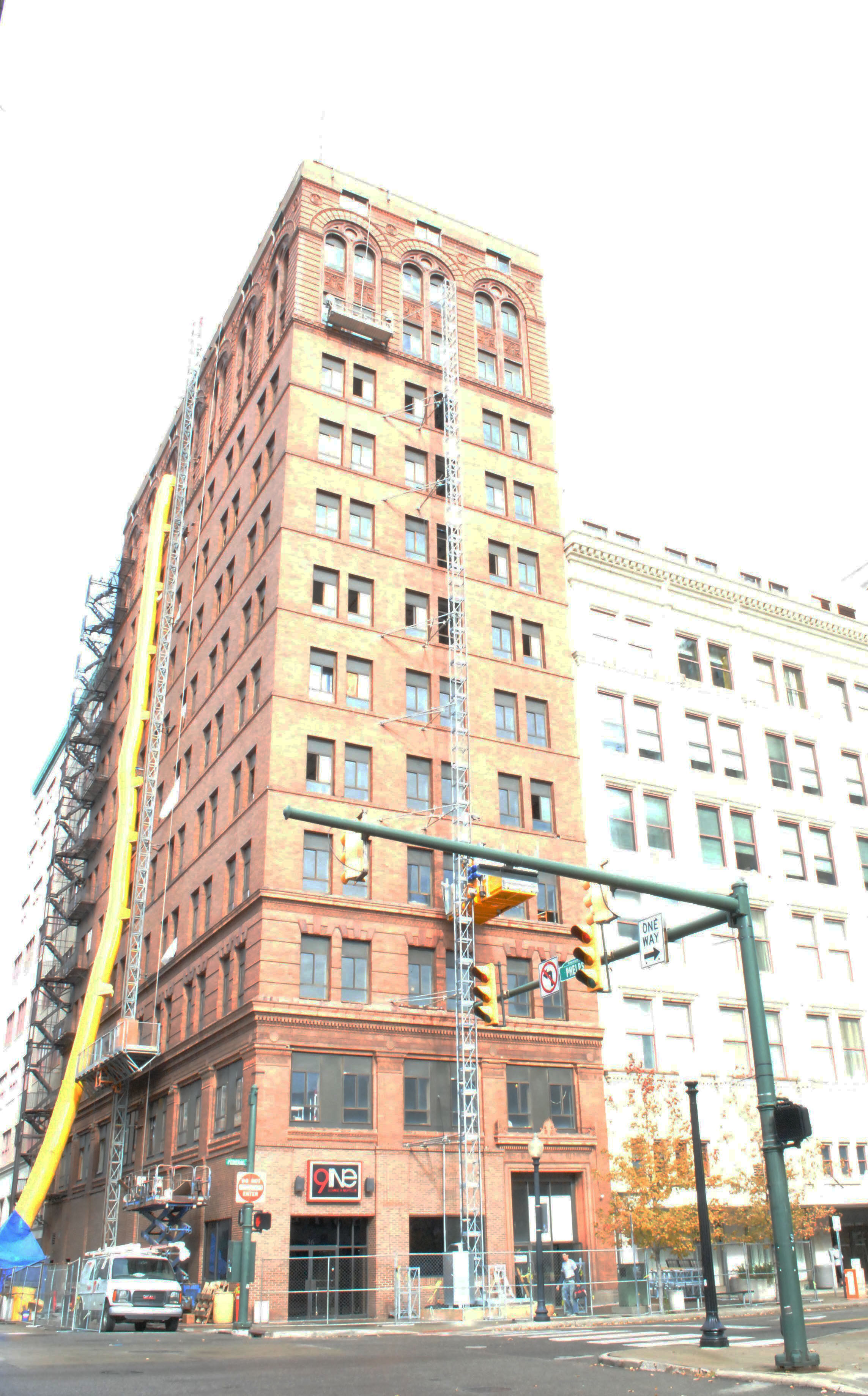
Early next year, the fencing and scaffolding on the east side of north Phelps Street will come down, and the newly-renovated Wick Tower will offer 50 apartments to people eager to live downtown.
Dominic J. Marchionda, CEO of NYO Property Group that owns the building, said the demolition work is complete, and they are into the rebuild stage. He is optimistic about the project.
“It’s an exciting project for the downtown,” Marchionda said. “We are getting a lot of inquires on it, and we anticipate that it’ll do very well.”
The opening was initially set for January but has been pushed back to the late first quarter or early second quarter of 2015. They will begin accepting applications for tenants this month, with units starting at around $900 per month.
In addition to the apartments, there will be commercial space available on the ground floor.
This is the fourth residential building in the city to be developed by NYO Property Group, following the Flats at Wick, Realty Tower and Erie Terminal Place. Marchionda said the previous buildings have been a success.
“Everything that we’re doing downtown has been received very, very well,” Marchionda said. “We are at full occupancy.”
Marchionda said the demand for housing downtown is coming primarily from forward-thinking young people who aren’t satisfied with the suburbs.
“We’re seeing a resurgence of younger people staying in the area rather than packing up after getting their education and leaving,” Marchionda said. “Most of our buildings that we have downtown are occupied by young professionals working and living in and around the downtown area.”
Phil Kidd, a downtown resident and business owner, likes being able to walk to events that are going on in the city.
“I really enjoy having access to so many things that appeal to me without ever really having to drive,” Kidd said.
NYO Property Group is one of the primary developers in Youngstown. In addition to the four residential buildings they’ve developed, they own 16 Wick Building, the Harshman Building, the Metropolitan Savings and Loan building, the Legal Arts building, the Stambaugh building and the St. Vincent De Paul building. They have also recently put in a bid to purchase the Phar-Mor building.
Marchionda said the company has an overall vision they are trying to realize downtown.
“Our plan is to bring some retail back, and bring some of the businesses that left the downtown back to the downtown, and then market it to new business and new entities that are out there,” Marchionda said.
Marchionda said he welcomes competition from other developers, but noted there is limited demand for housing at the moment, and it’s important not to flood the market.
“We could actually dump 1000 beds on the city tomorrow, in and around the downtown. We have enough capacity to do that. The question is, does the city of Youngstown need 1000 apartments, or 1000 beds? The research says no, not really, but if it gets to that, with all the positive things happening and all the redevelopment happening and taking place, then we will do it. If it warrants it,” Marchionda said.
Wick Tower, like many projects downtown, is being partially funded by tax credits.
“The purpose of the tax credit is to help with the restoration of the building and bring it back to its historical integrity,” Marchionda said.
He said it’s much easier to build a building if you start from scratch, but the tax credits incentivize rehabilitating old buildings, as opposed to letting them go to ruin while pursuing projects elsewhere.
“For example, the Flats [at Wick] was a much bigger building than Erie [Terminal Place], and was less expensive to develop than Erie was,” Marchionda said. “It ends up working out because of the tax credits.”
T. Sharon Woodberry, director of the city’s Economic Development department, said these incentives are provided at the state level.
“There are quite a few historical structures through Ohio, and there are programs in place to try to encourage investment to happen, so on the state level they have recognized that as a need,” Woodberry said.
She said the city also provided a $500,000 wastewater grant and property tax abatements for the improvements that have been made to the residential components of the building.
The residents of these renovated historical buildings serve an integral part in fueling the rebirth of Youngstown as an urban business center. Living among the historic towers, tenants are able to witness the revitalization of the city from their doorsteps.
“It’s an exciting time to be downtown because you’re seeing the constant growth of the area,” Kidd said.
